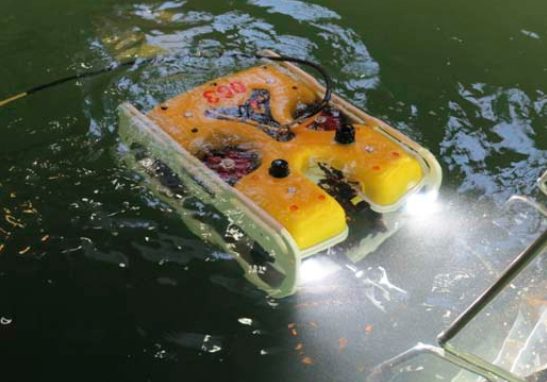By the end of the year, the Russian Navy’s search and emergency rescue service will receive 14 Marlin-350 unmanned remotely operated vehicle (ROV), the Ministry of Defense announced on March 30th.
It is planned that by the end of 2020, the search and rescue service of the Russian Navy will receive r 14 ROV Marlin-350, designed to perform a wide range of search and rescue tasks.
This was reported to the Commander-in-Chief of the Russian Navy, Admiral Nikolai Evmenov, at a working meeting in the Admiralty, where the development of search and rescue facilities of the Navy was discussed.
Currently, 43 units of the Marlin-350 ROV are on active duty in the Nasvy’s search and rescue service and on the rescue vessels of the Russian Navy fleets.
In particular, the Marlin-350 ROV are part of the standard search and rescue equipment of the latest rescue tugs of the Professor Nikolai Muru-class rescue ships.
The Marlin-350 ROV is delivered to the search and rescue forces as part of the activities of the Navy’s High Command to introduce robotic rescue technologies to reduce the risk of underwater operations with the involvement of diving specialists.
The Marlin-350 ROV is a light vehicle designed to monitor the protected area, search and detect intruders in the area under control and carry out other tasks related to prevention of unnoticeable penetration into the protected facility.
TNPA “Marlin-350” can be used to set sonar markers and lift objects captured by the manipulator.
The Marlin-350 is equipped with six propulsion engines, of which four horizontal engines are arranged according to the vector diagram.
Thanks to its special design, the Marlin-350 allows for high accuracy and speed of driving the control signals by the propellers (changes in rotation speed, reverse of direction), which meets the highest requirements for search and rescue equipment of the new generation such units.
Its features and advantages are the following:
- Use of advanced technologies and state-of-the-art hardware components;
- Use of magnetic couplings in propulsors;
- Compliance with the latest worldwide trends in vehicle construction;
- Availability of system expansion and installation of optional equipment;
- Installation of digital Full HD video camera;
- Fast deployable and simple-to-operate system;
- Patents on production prototype and useful model.
A thin, flexible optoelectric cable with low resistance to movement and close to zero buoyancy is used to connect the underwater vehicle and the surface module.
The data transmission system is designed in such a way that allows the user to connect many additional sensors and special equipment for underwater search and rescue operations.
During search and rescue operations, Navy rescue specialists will be able to install an additional high-resolution camera on the Marlin-350, as well as a multi-beam sonar, an altimeter, an all-round sonar, an underwater navigation system, a single-stage manipulator, and other additional equipment.
MORE ON THE TOPIC:









